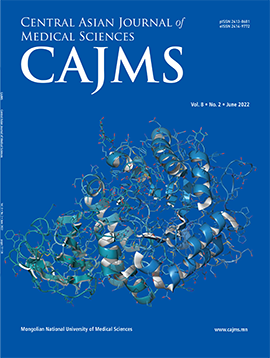The Results of the National Study of CLEIA Method for the Prevalence of HBV and HCV in the 40-64 Age Population of Mongolia
DOI:
https://doi.org/10.24079/cajms.2019.09.003Keywords:
Hepatocellular Carcinoma, Liver Fibrosis, Hepatitis B Virus, Hepatitis C Virus, MongoliaAbstract
Objective: Using high-sensitivity test results of CLEIA we aimed to investigate the prevalence of hepatitis B and C virus, and compare levels of AST, ALT, M2BPGI in the Mongolian population in the age between 40-64. Methods: In order to reflect the administrative and geographical features of Mongolia, the sampling was done at three levels: urban, province center, and rural. Immunological test was measured by chemiluminescence enzyme immunoassay (CLEIA). The statistical package for the social sciences (SPSS) version 25 was used for the statistical analyses. Results: The survey covered 3196 people. 71.8 percent of the patients surveyed had a negative in hepatitis test. 10.1 percent had a positive HBsAg test. 17 percent had a positive anti-HCV test. 1.1 percent had both a positive both HBsAg and anti-HCV (<.0001). AST and ALT increased more frequently during co-infection. M2BPGI protein average level in the non-infected group was 1.00 C.O.I, in the HBsAg positive group 1.65 C.O.I, in the anti-HCV positive group 1.83 C.O.I, and in the co-infection group 1.87 C.O.I (<.0001). Conclusion:10.1 percent of 40-64year-olds in Mongolia were infected with hepatitis B virus, and 17 percent had Hepatitis C virus and 1.1 percent had hepatitis B and C virus co-infections. Serum M2BPGi is increasing in hepatitis C virus infection and in co-infection.
Downloads
296
Downloads
Published
How to Cite
Issue
Section
License
Copyright (c) 2019 Mongolian National University of Medical Sciences

This work is licensed under a Creative Commons Attribution-NonCommercial 4.0 International License.




